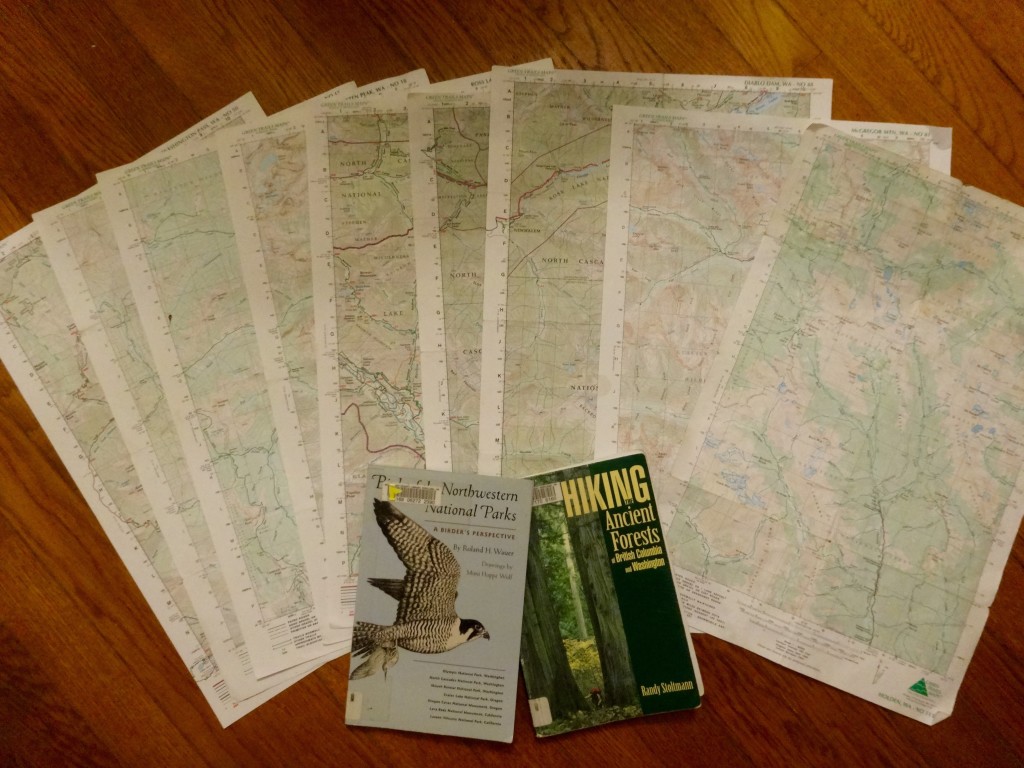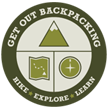The art of the trip planning

Here are all the maps and books that I am reading for a 218 mile loop in North Cascades this summer.
I have been posting trip reports and piecing together trips now for 15 years, and in that time, I have found some tactics that make trip planning a bit easier.
1. Focus on the good aspects of a trip rather than focusing on the elevation gain- It is easy sometimes to see the glass half empty, but it is always half full. I feel that focusing on negative aspects of any situation wear me down and make it harder to be objective. When I consider a trip that I am looking to do, I like to divide up the trip into hiking days and consider each day as its own separate entity. What climbs to passes are in store, where can I make up that climbing time (usually a river walk). Every hour of the day is not spent climbing to a barren pass usually, so when you get started in the early morning come up with a rough game plan where breaks can be had and the day can be utilize to its best. When a climb is at hand, take it slow and pick a pace that you can do handle for the duration of the pass.
2. Pick trips that are season specific- When I am planning a trip for June let’s say, I look for trips that are low elevation, have low or no high mountain passes, or places that avoid the mountains all together like a coast hike. By avoiding the high mountains, I also avoid the problems that they have early in the season like tons of snow which makes route finding difficult or dangerous. Or, harsh spring weather that can still plague the high country, cause flooding making difficult river crossings, or lahars (mud flows) that occur more often this time of year. Some good June trips would be the Olympic Coast, Rouge River Trail or The Lost Coast Trail.
3. Get to know your limits- It is important to know your own limitations both physically and mentally before planning a trip. Let’s say that you usually day hike with a light pack for 10 to 12 miles fairly easily during the summer months. Now, consider the variable of a backpacking trip like a heavier pack, maybe a day or two of rain, and slower or faster friends that will be joining you for the excursion. Over time I feel that the day hiking and backpacking mileages merge together, but that takes time. To start off if 12 miles is your limit, go for days that take on more like 8 to start and see how it goes, you can always go a bit farther on a side trip once camp is set up. And then next trip, up the mileage or terrain that you cover to give you more of a challenge, that will make your trips more rewarding.
4. When considering a trip, mix it up. I like my trips to have a bit of all my favorite places like lush forests, alpine passes and great sub alpine lakes. When I have some of these places in a loop trip, I feel that it makes a more complete experience. But I also let the weather trends dictate the trip I pick too, for example last summer we had some really hot days in Portland, so I planned ,ore old growth hikes to indulge in the shade. Also, when I have a trip that has a river valley and some ridge walking, I usually hike the river trail first so the trip is not anticlimactic.
5. Read about the natural history of an area.I love a good, well written natural history book right before a trip! So, when I am out there I can focus on special trees in that area or maybe the geology in a certain portion of the range. This gives me other ideas to think about to take my mind off the miles at hand and leaves me entertained as well.
